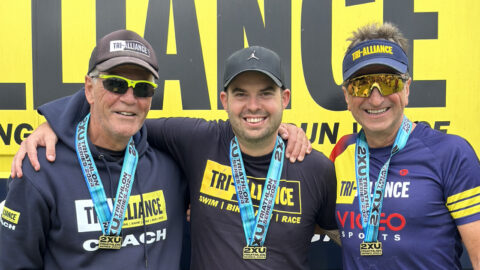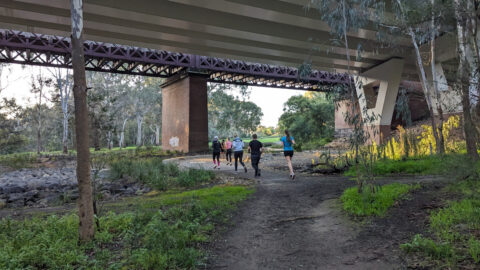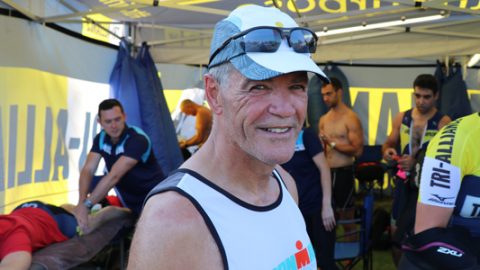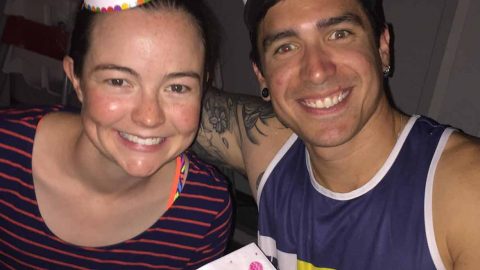2. EVER THOUGHT ABOUT GOING FOR CHAMPIONSHIP QUALIFICATION?
With a few of our athletes racing in various Championship races recently have you thought about representing your country in Triathlon?
For those who are Australian citizens there are many races across the country which act as qualifying races for the main events. Athlete Lisa MacFarlane who has represented Australia at Olympic distance racing and this year is going for long course gives you the low down on how to go about it.
It is a great way to see the country, race somewhere other than local races and maybe have a few holidays to boot. So whether it’s racing in QLD, WA or NT that grabs you and then racing in Europe (Rottendamn, Holland for short course 2017) have a read and chat to your coach about how to approach this.
There are several different world championships in the world of triathlon. The “M-dot” Ironman brand is probably the most-recognised – their iconic Ironman World Championship at Kona each year is the holy grail for many long course triathletes, and places are hotly contested and not easily achieved. But did you know that Ironman also hold a 70.3 World Championship?
This year it is being held in Mooloolaba, Qld, and next year it is in Chattanooga, Tennessee USA. There is the Challenge Championship, to be held this year in Samorin, Slovakia. Both these events require a top 3-5 finish to qualify, much like Kona.
There is also the ITU Long Course World Championships (in Penticton, Canada in 2017) and the ITU Short Course World Championships (in Rotterdam, Netherlands 2017). What makes these so special is that you go to them as part of the Australian Age Group team, wearing the green and gold race suit with your name emblazoned on the front and back.
Qualifying for the Australian Age Group team is very different to qualifying for the Ironman or Challenge Championships. Triathlon Australia allocates 6-8 races throughout the season where you gain points for racing and placing in each event. The top 25 finishers in each age group for each race are allocated points (with the winner getting 25 points, going down to the 25th place getting 1 point). You are allowed to race as many times during the season as you wish, but only up to 3 of your best placings will be used. At the end of the season all the race points are calculated, and the athletes with the most number of points (up to 20 athletes per age group) have the opportunity to race as part of the Australian team, wearing the green and gold.
So this is where smart racing and smart choice of racing becomes important. To give an example: last year at Challenge Shepparton (which is a long course qualifying race this season) there were 67 finishers in the Male 40-44 category. So finishing in the top 25 requires a decent race! Last year at Murray Man (which is another long course qualifying race this season) there were 24 finishers in the Male 40-44 category, so finishing in the top 25 is a bit easier. Doing a bit of online research becomes helpful in order to decide which races to target and how much travel you want to do. And your fastest race may not be your “best” race in terms of placing, depending on the field size.
The calendar of events is on the Triathlon Australia website (click on the link: National Calendar 2016-2017).
There is also an Australian Championship race (for long course this season, it’s Hell of the West in Goondiwindi, Qld). Competitors who finish within the top 25 in their age group get double the points. So if you finish 10th in a normal qualifying race you’ll get 16 points, but if you finish 10th at the Australian Championship you’ll get 32 points. And how many points do you need? Again, a bit of net-time is your friend here, but as I’ve done the research I’ll help you out. Here’s the link to the Australian Age Group team going to the 2016 ITU Long Course World Championships in Oklahoma, USA: long course team 2016.
Whilst Triathlon Australia has the option to take up to 20 athletes per age group, those spots don’t always fill up. Some people will argue that only one good race is needed, but 2 races means that you’ve got 2 races-worth of points, 3 races even more points. So what’s the catch? You have to be a member of Triathlon Australia (as Tri-Alliance athletes we’re already members, which is great); you have to complete an “Expression of Interest” to show your interest in qualifying for the event (here’s the link to the Triathlon Australia 2017 Age Group page – the selection polocies and other information are now on the following link: Age Group World Championships), and of course you have to finish the race(s)! As a side note, you also have to be an Australian citizen.
If you’re from England or Ireland or Spain or other, head to your National triathlon body’s website for details, as qualifying may be very different! “But I’m a short course triathlete” I hear some of you cry. Well, that’s the beauty of the ITU championships over Ironman or Challenge. There are 7 different disciplines through which you can qualify for the Australian Age Group triathlon team: Sprint, Standard (previously known as Olympic), Long Course (which is usually a half-iron distance), Duathlon, Aquathlon, Cross Triathlon and Paratriathlon.
The Sprint, Standard and Paratriathlon events are held together as part of the ITU World Triathlon Grand Final and World Championships, which are in Rotterdam, Netherlands in 2017, and Gold Coast, Australia in 2018. As suggested in the title, it is also the Grand Final of the World Triathlon Series, so not only are you racing in the green & gold against other countries, you also get to watch the elite triathletes (Royle, Moffat, Gomez, the Brownlees, Jorgensen to name a few) racing on the same course later that weekend.
For the first time next year, the remaining disciplines are being held together as part of a Multisport week-long festival – a format confirmed for the following 2 years as well. In 2017 it will be held in Penticton, Canada. In 2018 it will be Odense, Denmark, and 2019 it will be in Pontevedra, Spain. So you can qualify as a long course athlete, a duathlete, an aquathlete, a cross-triathlete, or any combination of the above.
If you want more information, head to is the Triathlon Australia website below:
|



















